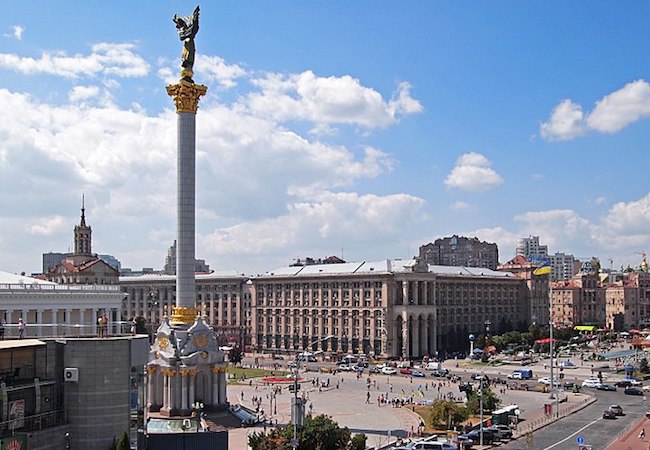It’s time for a Polish-Russian ‘Non-Aggression Pact’ in Belarus and Ukraine
Poland's recent suspicion of American and German strategic motives following the US' waiving of most Nord Stream II sanctions, last month's Biden-Putin Summit, and Berlin's support of former Prime Minister Tusk's reinvigorated attempt to oust the country's ruling party puts the Central European leader in a disadvantageous position but also unexpectedly creates the opportunity for it to negotiate an informal “non-aggression pact” with Russia in order for Warsaw to redirect its attention towards thwarting the newfound threats that its nominal allies pose to its sovereignty.

Background Briefing
Poland’s in a proverbial pickle after recent moves from its nominal American and German allies. The US’ waiving of most Nord Stream II sanctions, last month’s Biden-Putin Summit, and Berlin’s support of former Prime Minister Tusk’s reinvigorated attempt to oust the country’s ruling party prompted serious suspicion of their strategic motives. It also puts the Central European leader in a disadvantageous position after having irresponsibly formulated its foreign policy on the expectation that former US President Trump would win re-election and continue reshaping European geopolitics in a manner that’s in close alignment with Polish interests. I’ve been covering this over the past few months in the following pieces that intrepid readers should review in order to be brought up to speed on what’s been happening in this dynamic New Cold War theater:
* 9 April 2021: “A Discussion About Poland’s Geopolitical Future”
* 14 April 2021: “Poland Must Wake Up To The Threat Of German Hybrid War”
* 18 May 2021: “Negative Nationalism Is A Potent Means Of Political Mobilization In Parts Of Europe”
* 2 June 2021: “Poland’s Counterproductive Foreign Policy Is Responsible For Its Present Predicament”
* 11 June 2021: “Towards Increasingly Complex Multipolarity: Scenarios For The Future”
* 15 June 2021: “How Serious Are Poland’s Grand Strategic Disagreements With The US?”
* 24 June 2021: “Polish-US Missile Defense Co-Op Is A Strategic Smokescreen”
* 12 July 2021: “Former Polish PM Tusk Ridiculously Alleged A Kaczynski-Putin Conspiracy”
To make a long story short, Poland believes that the US backstabbed it by cutting a deal with Russia at its perceived expense regarding Nord Stream II. It’s also worried that this will embolden Germany to continue with its regional Color Revolution campaign of supporting liberal-globalist opposition forces against their conservative-nationalist governments in Central & Eastern Europe (CEE) like what’s presently happening on its own home front with Tusk and in Hungary when it comes to the growing anti-Chinese movement there. At the same time, the US and Germany continue to masterfully manipulate Poland’s “negative nationalism” vis-a-vis Russia in order to convince its leadership that Russia poses a military threat to that country’s sovereignty despite NATO’s Article 5 making such a worst-case scenario practically impossible.
Poland’s Siege Mentality
Under pressure from every direction even though the Russian one is a phantasmal product of the US and Germany’s coordinated infowar campaign to distract from their ongoing regime change attempt in Warsaw, the Polish leadership’s historical “siege mentality” is returning. It sees enemies everywhere, both within its borders and beyond, and fears that it might once again lose its sovereignty if something doesn’t soon change. The greatest threat to Poland comes from the US and Germany though, not Russia, but Poland has been pushed into acting as their vanguard for meddling in Belarus and Ukraine. Its leadership believes that it’s in their national interests to support the former’s anti-government movement in parallel with strengthening the latter’s post-Color Revolution government in order to incorporate them both into the “Three Seas Initiative” (3SI).
Poland Is CEE’s Last Hope
However one feels about that objective, it’s arguably secondary to protecting Polish sovereignty from the newfound threats that its nominal US and German allies pose to it. Should the ruling party fall through “democratic” means during the next elections as a result of the ongoing Color Revolution attempt successfully reshaping the voters’ perceptions (and it should be remembered that it only won last year by a razor-sharp margin), then the subsequently German-controlled and Tusk-led proxy government in Poland will probably abandon its mission to assemble the CEE states under its ideological leadership through the 3SI in order to oppose the “federalization of Europe”. Hungary is the ideological fountainhead of this movement but Poland has since taken the lead in turning it into a regional force to be reckoned with by virtue of its greater influence.
One can therefore say that Poland’s ruling conservative-nationalist party is the last hope that the CEE nations have for retaining their sovereignty in any meaningful way in the face of Germany’s renewed attempt to take over Europe, albeit this time without firing a shot but by leveraging economic, financial, institutional, and Hybrid War means. Accordingly, it must counteract the Color Revolution at home together with expanding the TSI across CEE. Right now, however, its attention is distracted after agreeing to become the US and Germany’s bulldog in Belarus and Ukraine. Poland can’t fight all these post-modern wars at once and must thus pioneer a breakthrough on one of them in order to concentrate on the more important fronts that were just described. With this in mind, it should seriously explore the possibility of a “non-aggression pact” with Russia.
Patriotic Pragmatism
Grey cardinal Kaczynski is perhaps the most politically Russophobic individual in the world today, driven by pure hatred for his country’s historical neighbor after sincerely believing despite all evidence to the contrary that Moscow had a secret hand in the 2010 plane crash that killed his twin brother who was Poland’s President at the time. Nevertheless, he’s more of a Polish patriot than a political Russophobie if push comes to shove, which says a lot about his nationalist ideals regardless of whether observers agree with the associated policies at home and abroad that were influenced by this vision. With Tusk’s German-backed return to Polish politics, Kaczynski is confronting the greatest threat thus far to his de facto rule. He might even have realized that the so-called “Russia threat” that was hyped up by his own nationalists, Germany, and the US was just a distraction.
Towards A Polish-Russian “Non-Aggression Pact”
Poland admittedly succeeded on the Ukrainian front in its regional Hybrid War on Russia across their historically overlapping “spheres of influence” but it’s thus far failed on the Belarusian one. The situation is presently at a standstill: Ukraine remains dangerously dysfunctional, underdeveloped, and unstable even though it’s now back under Poland’s hegemonic sway while Belarus is still surviving but with an increased dependence on Russian support after having repelled several waves of Color Revolution attempts over the past year. It’s extremely unlikely that Poland can change the status quo in either of them no matter how much effort and resources it continues to pour into these interconnected operations. Instead of wasting its valuable time trying to “contain” Russia in the East, it should redirect everything towards countering Germany inside Poland itself.
It’s unclear exactly what the terms of an informal Polish-Russian “non-aggression pact” in Belarus and Ukraine would look like, but it could be modeled off of the much larger one that the US and Russia are also informally attempting to negotiate after last month’s Biden-Putin Summit. What’s most important is that their threat assessments of one another, influenced as they are by their suspicions of each other’s strategic motives, gradually decline to the point where a so-called “new normal” can set in for more responsibly regulating their regional competition. The best-case scenario would be that both countries could “buy time” to focus on more pressing priorities, which relate to Poland defending itself from Germany’s recently intensified Hybrid War onslaught while Russia concentrates on recalibrating its Eurasian “balancing” act through the “Ummah Pivot”.
Concluding Thoughts
At all costs, Poland must thwart Germany’s attempts to “democratically” overthrow its ruling party through Tusk during the next elections. Failure would spell the end of CEE’s conservative-nationalist dreams and forever reduce those countries to German vassals. The only hope that they have is the Polish-led 3SI, which would be abandoned under a German-backed proxy government. Berlin would consequently spread its hegemonic tentacles all throughout their societies and choke every patriotic force that remains, making it impossible for them to ever reverse Germany’s third attempt at taking over Europe. Biden, unlike Trump, is in full support of this outcome for ideological reasons as a fellow liberal-globalist, but if Poland survives this joint regime change operation, then the CEE conservative-nationalists might finally launch a counteroffensive to save Europe.




